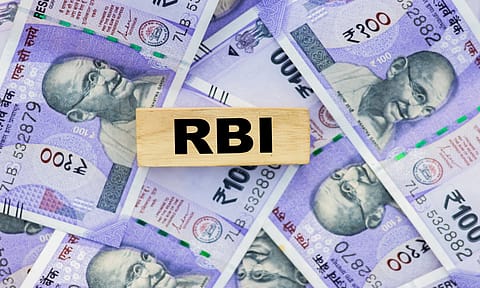No assets to pledge? Here's how RBI plans to unlock loans for MSMEs using live cash flow data
Cash-flow-based lending reverses the whole dynamics; it uses digital transactions, invoices, and payment patterns to assess the live business health

In a significant move to strengthen India's economic foundation, the 30th Standing Advisory Committee (SAC) met in Coimbatore on October 27, 2025, to address the major financial issues facing the Micro, Small, and Medium Enterprises (MSME) sector.
Chaired by RBI Deputy Governor Swaminathan J., the meeting convened key officials from the RBI, Ministry of Finance, major public sector banks, and industry associations. The committee focused on revitalising credit flow to MSMEs, with discussions centring on a multi-pronged strategy.
Key agenda items included addressing the persistent credit gap, promoting innovative cash-flow-based lending, and accelerating the use of digital solutions such as TReDS to improve credit linkage.
The SAC also explored ways to enhance credit guarantee schemes and develop frameworks for the revival and rehabilitation of distressed MSME units, emphasizing a comprehensive approach to building a more resilient and accessible financial ecosystem for the sector.
What is cash-flow-based lending? It essentially examines how money moves through a business — what’s coming in, what’s going out, and how predictable those flows are — to determine if the business can repay a loan. Instead of focussing on collateral or past balance sheets, it emphasizes the business’s current earning capacity.
For decades, traditional lending models have depended heavily on collateral and detailed documentation, limiting credit access for thin-file MSMEs. Cash flow–based lending transforms this approach by allowing banks and NBFCs to evaluate repayment ability through financial data such as account aggregator reports and GST filings.
Srijan Nagar, co-founder of FinBox, said, "Traditional lending has always relied on collateral and historical statements— a backward-looking view of creditworthiness. Cash-flow-based lending reverses that. It uses real-time digital data—from invoices, GST filings, payments, and sales—to create a live picture of a business’s ability to repay."
Recommended Stories
The difference lies in speed, accuracy, and inclusion. When lending decisions are based on dynamic cash data rather than static reports, MSMEs gain quicker access to the appropriate amount of credit, and lenders can make more precise, data-driven decisions.
How will it benefit MSMEs?
Nearly 80% of India's 64 million MSMEs remain underserved by formal credit channels because traditional lending still depends on collateral and historical balance sheets," said Kunal Jhunjhunwala, founder of airpay payment services.
"Cash-flow-based lending reverses the whole dynamics; it uses digital transactions, invoices, and payment patterns to assess the live business health. This transition has the potential to change the entire financing landscape of MSMEs in India. By using real cash movements rather than old financial documents, lenders can make quicker, data-backed decisions, and entrepreneurs can access growth capital when they really need it. It's a shift from assumption-based risk to evidence-based opportunity, and that's where the future of inclusive finance lies," said Jhunjhunwala.
Adding to it, Nagar said, "For MSMEs, this model could be game-changing. Most small businesses don’t have heavy assets to pledge, and their cash cycles are uneven — which keeps them out of traditional lending systems. Cash-flow-based lending makes it possible to match credit to their business rhythm."
With the right digital rails — Account Aggregators, embedded finance, and platforms like Trade Receivables Discounting System (TReDS) — lenders can now see an MSME's true financial health and design products that fit. That means quicker decisions, fairer terms, and ultimately a more resilient credit ecosystem.
"By focusing on business activity instead of assets, this model empowers MSMEs that run efficiently but lack collateral or credit history to access faster, affordable loans. As more MSMEs formalise, their growing digital footprints will strengthen credit profiles and make the financial ecosystem more inclusive and transparent," said Arun Poojari- CEO & Co-Founder of Cashinvoice